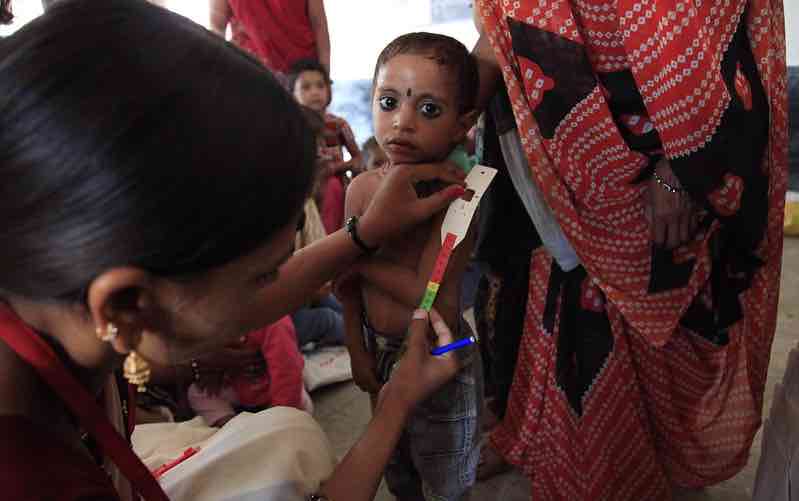Catch-up growth cannot undo damage from undernutrition
- From
-
Published on
10.07.20
- Impact Area

By Jef L. Leroy, Edward A. Frongillo, Pragya Dewan, Maureen M. Black, and Robert A. Waterland
Linear growth retardation is a widely used marker of undernutrition. While the development community has long worked to reduce the worldwide prevalence of stunted linear growth, in recent decades the possibility of reversing growth retardation has attracted increasing interest. Although helping stunted children achieve “catch-up growth” seems a worthwhile aim, it is one that begs several questions.
In particular, we must ask if catch-up growth is actually possible, and if so, does it necessarily translate into recovery from the broader consequences of undernutrition, such as delays in neurocognitive development, increased risk of chronic disease and death, lower educational attainment, and reduced earnings in adulthood? The answers to these questions will have important implications for the design and evaluation of nutrition interventions and policies. In a new paper in Advances in Nutrition, we delve into these questions by examining the potential to recover from undernutrition in three domains: linear growth, developmental epigenetics, and brain and neurocognitive development.
What is catch-up growth?
Broadly, catch-up growth is a reversal of growth retardation. But varying criteria and methodologies for determining catch-up growth abound in the literature, creating confusion about how to identify and study it. Four criteria must be met to demonstrate catch-up growth: (1) a growth-inhibiting condition, (2) a resultant period of lower-than-normal linear growth velocity, (3) alleviation of the inhibiting condition, and (4) a subsequent period of faster-than-normal growth.
The only way to reduce the height gap accumulated during the period of lower-than-normal growth velocity is for children to subsequently gain length or height in absolute terms faster than the expected linear growth velocity for their age and sex. Just like a lagging cyclist in a race must pedal much, much faster to catch up to a rider ahead, a child must grow at a much faster rate to catch up to where he or she would have been had there been no period of lower-than-normal growth. (See the interactive graphic – text continues below.)
Photo Credit: Russell Watkins/DFID
![]()
Related news
-

Reinventing Kenya’s Snack Future with Dryland Grains
International Crops Research Institute for the Semi-Arid Tropics (ICRISAT)21.11.25-
Nutrition
-
Poverty reduction, livelihoods & jobs
Faces of Impact - Video Feature Story On a quiet backstreet in Mihango, Kenya, the…
Read more -
-

COP30 can enable Greening Plant Nutrition in East and Southern Africa
International Rice Research Institute (IRRI)17.11.25-
Nutrition
Image creditAfrica rice farming by majimazuri21, Pixabay Licence By Jamie Males (republished from …
Read more -
-

Positioning healthier rice varieties in Odisha for market demand and farmer income
International Rice Research Institute (IRRI)28.10.25-
Nutrition
-
Poverty reduction, livelihoods & jobs
In western Odisha, farmer groups and women’s self-help groups are taking the lead in bringing…
Read more -
